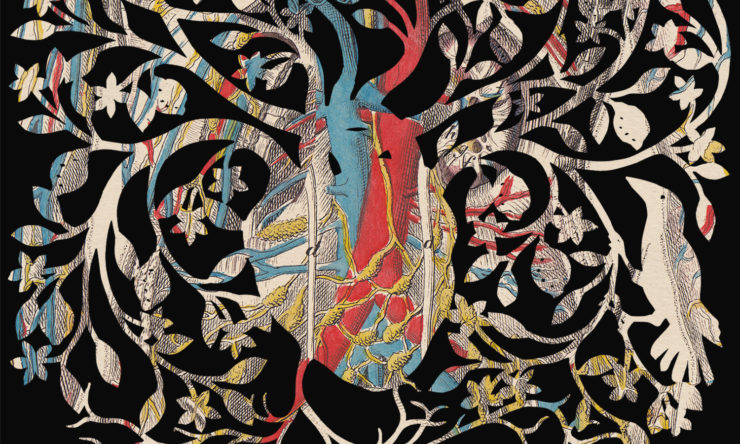Here at Tor.com we love a good Gothic. The spooky houses that seem to have personalities of their own, the sinister men with murky pasts, the plucky heroines fighting against all the creepiness to learn the truth or find love or just get the hell off this storm-toss’t windswept cliff already. While traditional Gothic tales are often based in white, Euro-centric Romanticism, some 20th and 21st Century authors have remixed classic Gothic elements to lovingly tell stories about people of color, queer people, and women who want to write their own narratives rather than just being the madwoman in some dude’s attic.
Join us for sun-baked Australian tales, a story that swaps the moors for Mexico, and the book that as far as we’re concerned still stands as The Great American Novel, and tell us about your favorite Gothic tales in the comments!
Flyaway by Kathleen Jennings
Buy the Book
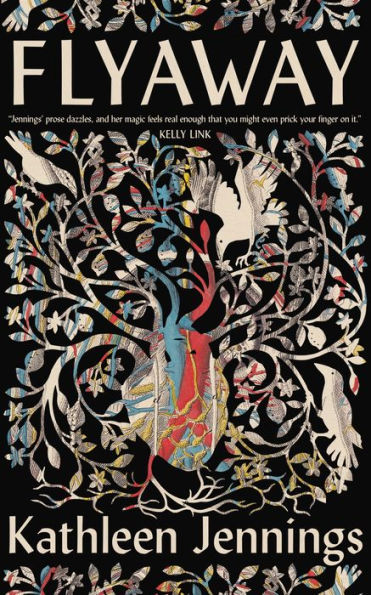

Flyaway
Far from the misty moors of England or the dripping Spanish moss of the south, Kathleen Jennings gives us a new take on Gothic that thrives under a bright Australian sun! Bettina Scott has always believed her memories of her brothers’ disappearance. But when she gets a mysterious note from one of her brothers she has to question not only her own mind, but the facts around her father’s abandonment of her, as well. Bettina sets out from her small Western Queensland town to find the truth, and brings the reader along on a journey that becomes increasingly surreal as she tangles with uncanny dogs, schools that have… vanished (???), charmed talismans, and even actual monsters.
What happened to Bettina’s brothers? What will happen if she finds them? And if she can’t trust her own mind, who in the world can she trust?
Picnic at Hanging Rock by Joan Lindsay
Buy the Book


Picnic at Hanging Rock
Picnic at Hanging Rock is the ur-Australian Gothic. Published in 1967 it quickly became a huge hit, and is considered a classic of Australian literature. The book is set in 1900 at a girls’ boarding school, and starts off exploring all the tropes of that subgenre, as we meet stiff, prim teachers who are feared by their pupils, the younger, more permissive teachers who inspire fervent love, Queen Bees leading their cliques, misfits trying to keep up, and intense friendships that blur into romantic obsessions. But soon the story takes a much creepier turn, when the girls head out for a Valentines Day picnic at the titular Hanging Rock. Four of the girls, including the most popular young lady at the school, venture off on a hike together, with their math teach following behind at a leisurely pace. Hours later, only one of them returns, frantic, with no memory of her time on the Rock and no idea how much time has passed.
The rest of the book follows the search for the women and the effect of their disappearance on the school and surrounding community, but of course what hovers over the entire story is that classic Gothic double whammy: the terror of female sexuality, and the terror of nature itself. Were the girls abducted? Raped? Eaten by beasts? Or did they transform into beasts themselves?
Sing, Unburied, Sing by Jesmyn Ward
Buy the Book
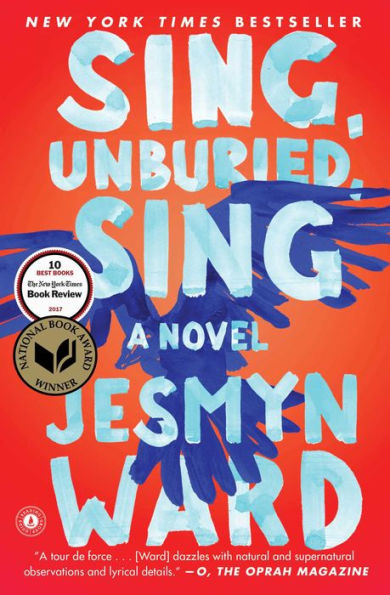

Sing, Unburied, Sing
Ward’s wrenching novel is a family saga, an examination of the US prison system, and a ghost story. Jojo and Kayla, a brother and sister living in Bois Sauvage, Mississippi, come to rely on their grandparents while their mother, Leonie focuses on getting their father out of prison. The children and their grandmother have a connection their mother doesn’t share—all three can see and speak with the dead. As Leonie and a friend head out on a desperate, meth-addled journey to deal with the men in their lives, the children are forced to make sense of the adults’ behavior, their Mam’s illness, and the aura of death and desperation that hangs over their lives.
Ward’s novel uses the best tropes of Gothic fiction to peel back layer after layer of Southern life, through the impossible history of racism, the suffocating weight of white supremacy, the tug of addictions that promise release from all that pain, and the ghosts that are there to meet you at every bend in the road.
Wide Sargasso Sea by Jean Rhys
Buy the Book


Wide Sargasso Sea
Wide Sargasso Sea is Jean Rhys’ explicitly anti-colonialist response to Jane Eyre. The novel follows Antoinette Cosway, a formerly rich Jamaican heiress of Creole descent who eventually becomes the “madwoman” in Mr. Rochester’s attic. Antoinette tells her own story, in which she is not mad at all, but forced into a hopeless situation by her tyrannical English husband, who is not named in the book. As the book unfolds in the days after the Slavery Abolition Act 1833, Antoinette’s own racism and the consequences of her family’s choice to be slaveowners form a pivotal point in her downfall.
Rhys, who was born in Dominica, takes a scalpel to an iconic Gothic tale to look at British oppression in the Caribbean, the horror of white supremacy and slavery, and both men’s brutal treatment of women, and the way elite women can trade an illusion of safety to become complicit in the abuse of the lower class.
Mexican Gothic by Silvia Moreno-Garcia
Buy the Book
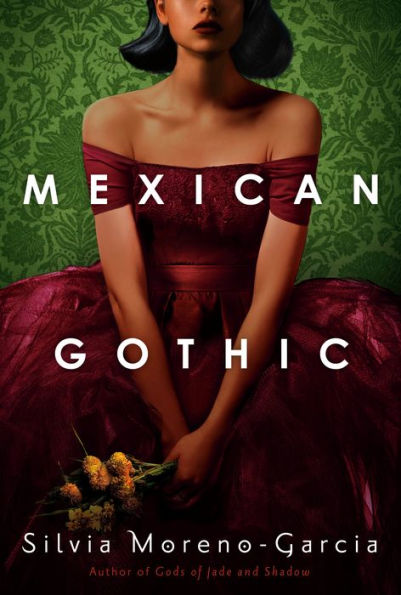

Mexican Gothic
High Place stands in the Mexican countryside, home to Howard Doyle, an ancient Englishman and his sons, one handsome but threatening, the other shy. When Noemí’s cousin Catalina asks her to leave her city life and come to High Place it’s shortly after her marriage to Virgil—and Catalina clearly feels that she’s under some sort of threat. Noemí is used to life as a pampered debutante, but she soon realizes that she’ll need to become an amateur detective to help her cousin. Is Virgil truly a threat? What are the secrets that seem to haunt Howard? And why has the High Place itself begun to appear in Noemí’s dreams, showing her images of grotesquerie and beauty that haunt her waking life and hint that she may never be able to leave? Can a house have a will of its own?
The author of Gods of Jade and Shadow takes all the tropes of a classic Gothic and transports them to the Mexican countryside, where the fading English elite fight to hold on to their power—even if it means living in thrall to ancient evil.
The Sundial by Shirley Jackson
Buy the Book


The Sundial
How about a Gothic Apocalypse? (A-goth-alypse?) While not an overt horror novel like The Haunting of Hill House, nor a creepy gothy delight like We Have Always Lived in the Castle, The Sundial takes the idea of making the house a character and runs with it. The Halloran house is a stately manor, encircled by a nice high wall, and occupied by the elderly Richard and Orianna, Maryjane, their daughter-in-law, and Fancy, their granddaughter. Until recently it was also inhabited by their son Lionel, but immediately before the book opens he dies in a mysterious fall that Maryjane is quite sure was murder. In addition to the family are Richard’s nurse, his sister, Fanny, Fancy’s governess, Miss Ogilvie, and Essex, who is supposed to be cataloguing the vast library but might be cataloguing Orianna instead. The book becomes a true locked room story as the remaining Hallorans bicker amongst themselves. They gradually become obsessed with the idea that the world is coming to an end, and that the only way they can survive the apocalypse and become the inheritors of the earth beyond the wall is to stay the heck inside.
When the book was released in 1958, plenty of reviewers thought that it was a commentary on the Cold War and nuclear tensions…but it might be just a little bit relevant right now, no?
Other Voices, Other Rooms by Truman Capote
Buy the Book
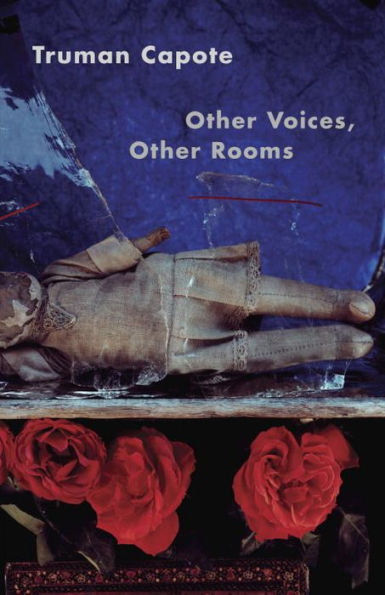

Other Voices, Other Rooms
Truman Capote’s debut novel took a basic Gothic storyline, wrapped it up in a southern coming-of-age story, and made it queer as heck. Main character Truman Streckfuss Persons Joel Harrison Knox is sent to live with his father’s side of the family at Skully’s Landing—despite the fact that his father abandoned him when he was a baby, and doesn’t want him now. The family is exactly what you’d expect: Miss Amy, Joel’s furious stepmother, her cousin Randolph, openly gay and foppish, and, presumably, his father, whose whereabouts Miss Amy refuses to discuss. Joel befriends next door tomboy Harper Lee Idabel Thompkins, and the two navigate life with mysterious adults who don’t want them around very much. And, because this is a proper Gothic, Joel sometimes sees a ghost in the attic window of the house—who might not actually be a ghost.
Where is Joel’s father? Is the house haunted? Can two kids who refuse to conform to gender stereotypes get along in the rural South?
Beloved by Toni Morrison
Buy the Book


Beloved
What can anyone still say about Beloved? Obviously, the greatest American novel is a ghost story. And just as obviously, any novel that sets out to understand this country must center our history of slavery and exploitation. Morrison gives us a classic Gothic framework: characters with troubled histories and secret shames; a contentious house that seems to have a life of its own; a second, more contentious house that threatens at every moment to drag our character back into the past and trap them forever; complicated gender dynamics; and, yes, A GHOST. (Or rather, a mass of ghosts—all the people whom main character Sethe saw destroyed by slavery Sethe’s hope and youth, Sethe’s daughter, Beloved, America itself.)
The difference is that in Morrison’s hands each of these tropes are used to confront slavery. The story’s current troubled house is in Ohio, the one Sethe and her mother-in-law and living children moved into after they escaped the South. But the neighbors don’t want them there, and every room is soaked in memories of Sethe’s dead child, Beloved, whom Sethe killed rather than have her taken back into slavey. The past house is Sweet Home, the plantation that Sethe was forced to work on, and there has never been a more perfectly-named setting in all of literature. The ghost is, of course, Beloved, come back to Sethe as the young woman she never became in life, determined to love her mother, and to punish her. How can Sethe ever move on into a future with Sweet Home as her past? How can she banish her daughter’s ghost when more than anything she wants her to stay?










